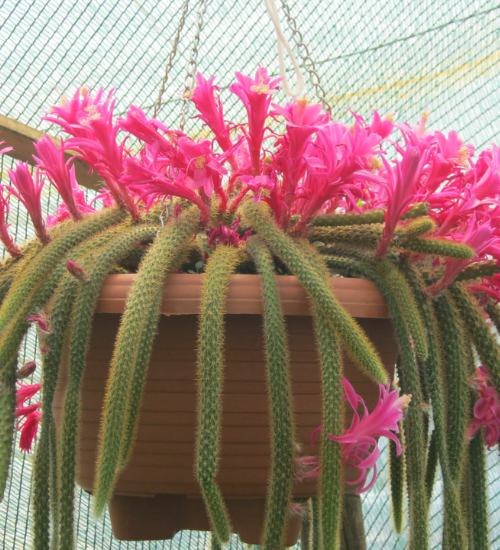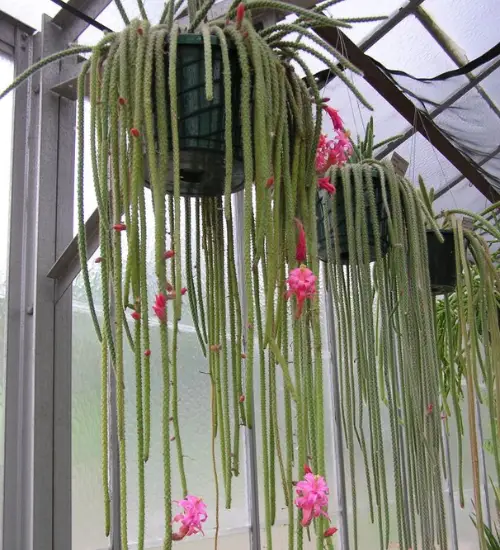Sun: full sun to partial shade
Water: Typical water needs for a succulent
Temperature: Zone 10b from 35° F to 40° F (1.7° C to 4.4° C)
Winter Survival: Not cold hardy
Propagation: cuttings, seeds
Flower: mid-spring
Flower Type:
Toxic: Generally non-toxic to humans but can be toxic to animals.
Dormant: winter
Space Requirement: Indoors & Outdoors
Common Problems: Plants may rot if overwatered, pests
Where to buy Disocactus Flagelliformis?
Basc Care for Disocactus Flagelliformis
Watering
Watering for Disocactus Flagelliformis is a simple task. It requires Typical water needs for a succulent.
Regular watering period should be every 2 weeks
Fertilizing
Only feed this succulent during its active growing seasons which means spring and fall. Use the right fertilizer applied in the right amounts. Applying half-strength balanced fertilizer every month or so is recommended for optimal results.
Do not fertilize during winter as the plant is dormant.
Sun & Location Requirements for "Rat-Tail Cactus"
Disocactus Flagelliformis requires full sun to partial shade in order to stay healthy and vibrant. Always keep an eye on the temperatures and light levels as too much direct sunlight can be damaging to this type of succulent. If you notice any signs of distress, try moving it to a shadier spot within your garden or home.
In order to ensure that Disocactus Flagelliformis survives the winter, insulation and drainage are essential. A layer of mulch or gravel around the plant can help keep the roots warm during cold temperatures. Furthermore, avoiding exposure to wind and sun can reduce the risk of frost damage and promote longevity for your succulent.
Disocactus Flagelliformis also benefits from some indirect light throughout the day as well, so make sure you give it enough space to soak up light without becoming too exposed to heat.
Propagation
One way to propagate Disocactus Flagelliformis is by cutting
Propagating Disocactus Flagelliformis from seeds is a great way to produce new plants without relying on cuttings or divisions. It's important to look for healthy, dark and plump seeds that are slightly sticky when touched. The soil should be pre-mixed with well-draining potting mix, before evenly sowing the seeds and pressing them into the surface. To ensure successful germination, gentle misting of the soil should be done and placed in indirect light.
Toxicity

Before deciding to bring Disocactus Flagelliformis into your home, it’s important to know that these plants may be toxic to animals. The saponins in the leaves can cause harm if ingested, so take precautions to ensure pets cannot access these plants. With proper care and vigilance, you can safely enjoy the beauty of this succulent without worry.
Pests and Diseases
Disocactus Flagelliformis can be affected common pests and diseases like most of the other succulents such as scale insects and Red spider mites.
If you do spot any of pest signs, you can treat your succulent using below methods.
- Scale insects: quarantine, clean infected plants, soapy water.
- Red spider mites: Quarantine, clean your infected plants, treatment with a systemic insecticidal/soapy water.
Besides that, to prevent serious health issues from happening, keep your succulent in a well-ventilated area and check it regularly for any signs of pests or health problems.


